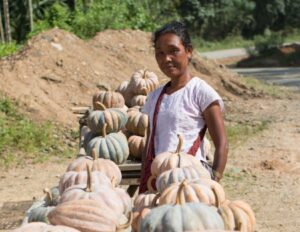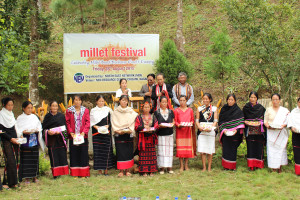 Organic farms support more biodiversity, supporting 34% more plant, insect and animal species than conventional farms, according to a new paper. For pollinators such as bees, the number of different species was 50% higher on organic farms, although the authors stress that the study only looked at ‘species richness’.
Organic farms support more biodiversity, supporting 34% more plant, insect and animal species than conventional farms, according to a new paper. For pollinators such as bees, the number of different species was 50% higher on organic farms, although the authors stress that the study only looked at ‘species richness’.
They looked at data from 94 previous studies covering 184 farm sites dating back to 1989 and found that this effect has remained stable over time and shows no signs of decreasing.
“Species richness tells us how many different species there are but does not say anything about the total number of organisms,” said Sean Tuck of Oxford University’s Department of Plant Sciences, lead author of the paper
in the Journal of Applied Ecology. “There are many ways to study biodiversity and species richness is easy to measure, providing a useful starting point. Broadly speaking, high species richness usually indicates a variety of species with different functions. Taking the example of bees, species richness would tell us how many different species of bee were on each farm but not the total number of bees.”
The researchers, from Oxford University and the Swedish University of Agricultural Science, re-analyzed the data using satellite imagery to estimate the land use in the landscape surrounding each farm site to see if this had an impact on species richness. Organic farms had a bigger impact on species richness when the land around them was more intensively farmed, particularly when it contained large tracts of arable land. Arable land is defined as land occupied by crops that are sown and harvested in the same agricultural year, such as wheat or barley.
“We found that the impacts of organic farms on species richness were more pronounced when they were located in intensively-farmed regions,” said Dr Lindsay Turnbull of Oxford University’s Department of Plant Sciences, senior author of the study. “This makes sense because the biodiversity benefits of each organic farm will be diluted in clusters of organic farms compared to an organic ‘island’ providing rich habitats in a sea of pesticide-covered conventional fields. This effect was weakest in pollinators, which may be because pollinators are likely to visit neighbouring farms and could be affected by pesticides there.”
The impact of organic farming on total species richness varied significantly across the data, with the average gain in species richness varying between 26% and 43%. This variation could be down to a number of factors relating to regional variation in farming practices and definitions of ‘organic’.
“Some conventional farms will intensively spray pesticides and fertilizers whereas others will use mixed methods of crop rotation and organic fertilizers with minimal chemical pesticides,” said Turnbull, who apparently knows of magical pesticides that contain no chemicals. “There are also regional differences in farming practices, and the majority of the studies in our data were in developed nations with long histories of farming such as those in Western Europe. There, some wildlife have thrived in extensively managed farmland but are threatened by agricultural intensification. However, in developing nations there is often great pressure on the land to provide enough food for local people, resulting in the conversion of natural habitat to farmland. In such cases the benefits of organic farming are less clear, as this may require more land to achieve the same yield as conventional farming.
“More research is needed on the impact of organic farming in tropical and subtropical regions. For example, there are no studies on organic bananas or cocoa beans, two of the most popular organic products found in European supermarkets.
“At present, we simply cannot say whether buying organic bananas or chocolate has any environmental benefit.”
Story taken from Science2.0. To read original story follow http://www.science20.com/news_articles/organic_farms_support_third_more_species-129003





